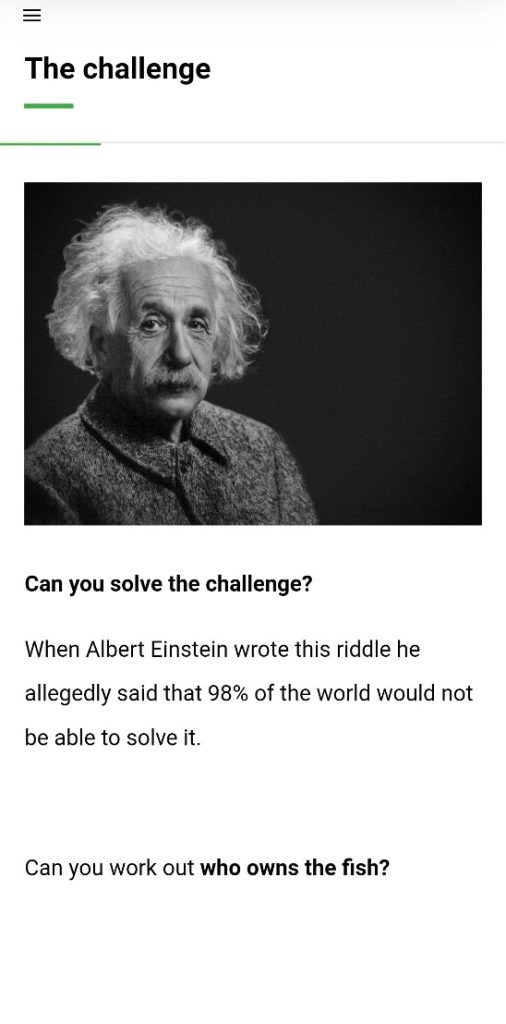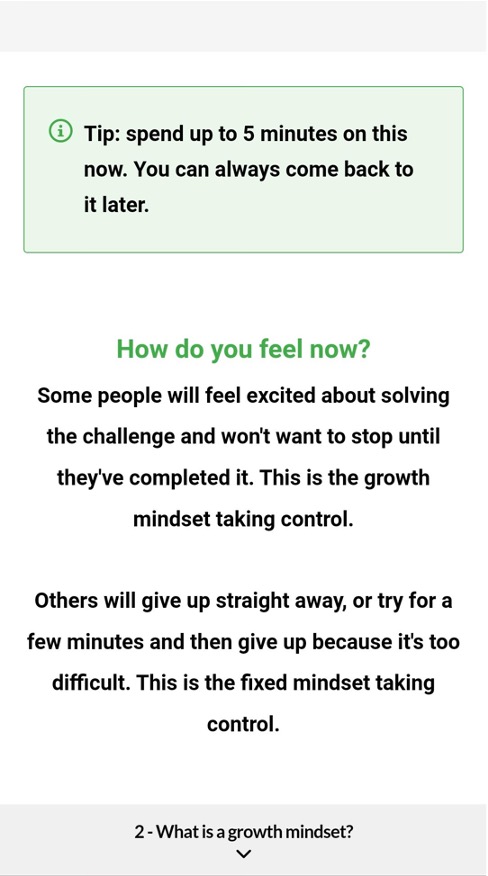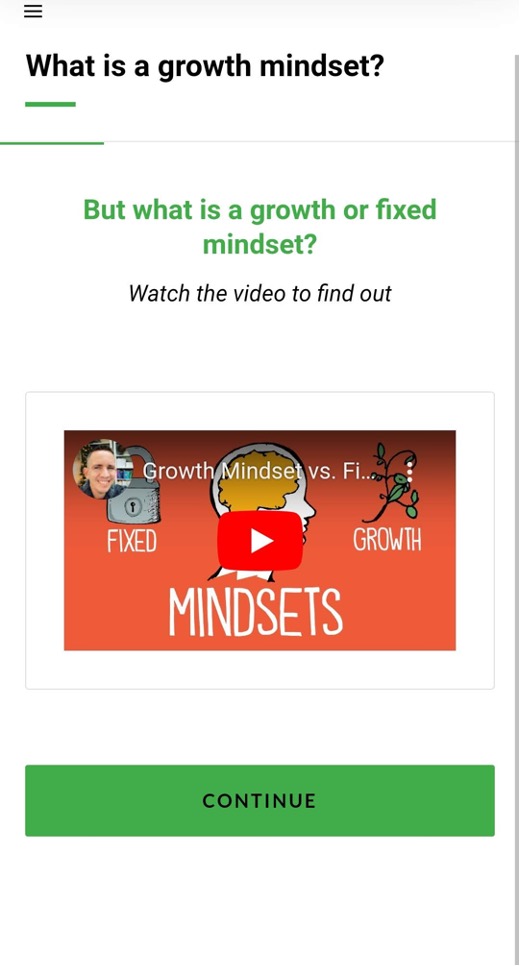The first step is always to discover more about the users and their needs. That isn’t the purpose of this portfolio piece as the Store leadership curriculum of which this module was a part was already fully scoped. Instead, this is to demonstrate how I embed best practice learning design skills into eLearning.
The aim of this eLearning was for Store Managers to embrace their growth mindset.
Learning outcomes
- I always write learning outcomes from the learners’ perspective: what will they be able to do by the end of the learning.
- Usually include the what, why, how
- I write my learning outcomes using Bloom’s taxonomy, before translating them to questions for the learners.
The structure of this module followed the following learning outcomes:
- Recognise your own growth or fixed mindset.
- Explain the difference between a growth and fixed mindset.
- Use techniques to develop your growth mindset
Apply Kolb’s experiential learning cycle (do, review, learning, apply).
- In this example, the first thing students do is try to solve a challenge (and thus to activate a growth or fixed mindset), before they have a chance to review whether it was fixed or growth.
- They then can watch a video explaining what growth and fixed mindsets are.
Include practical exercises
- Sometimes these are complex questions to answer or to engage with an online simulation.
- In this case, they are tips and techniques to try at home or at work.
- End with a call to action. In this case, I have included a series of short challenges to apply over the next few days.
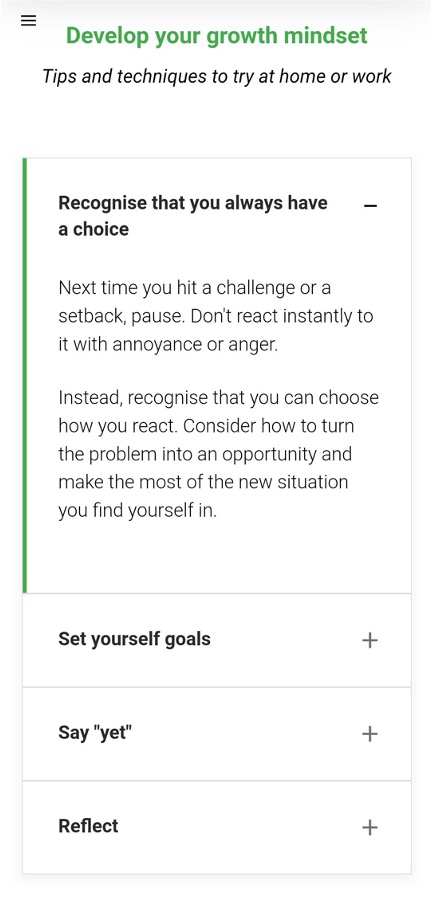
practical things to do.
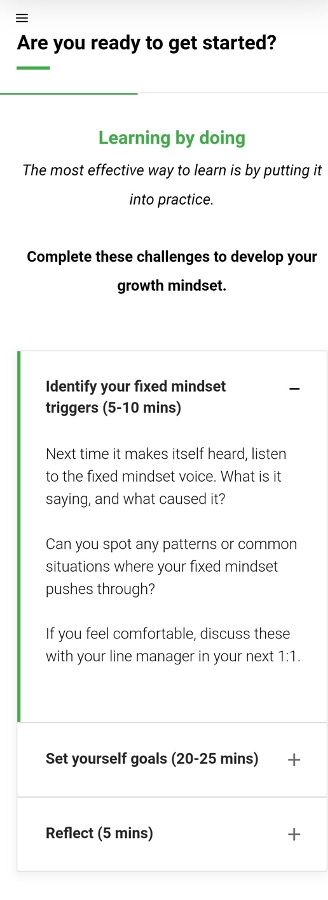
with estimated time to complete.
Other elements I try to include:
- Tap into emotion.
- Provide opportunities for reflection.
- Use humour where appropriate, usually at least a conversational tone.
- Refer back to the audience and their needs.
- Where relevant, include a list of further reading for those who want to find out more.
Built using Rise360
© The Warehouse Group (2019). Reproduced by permission of the Warehouse Group.
